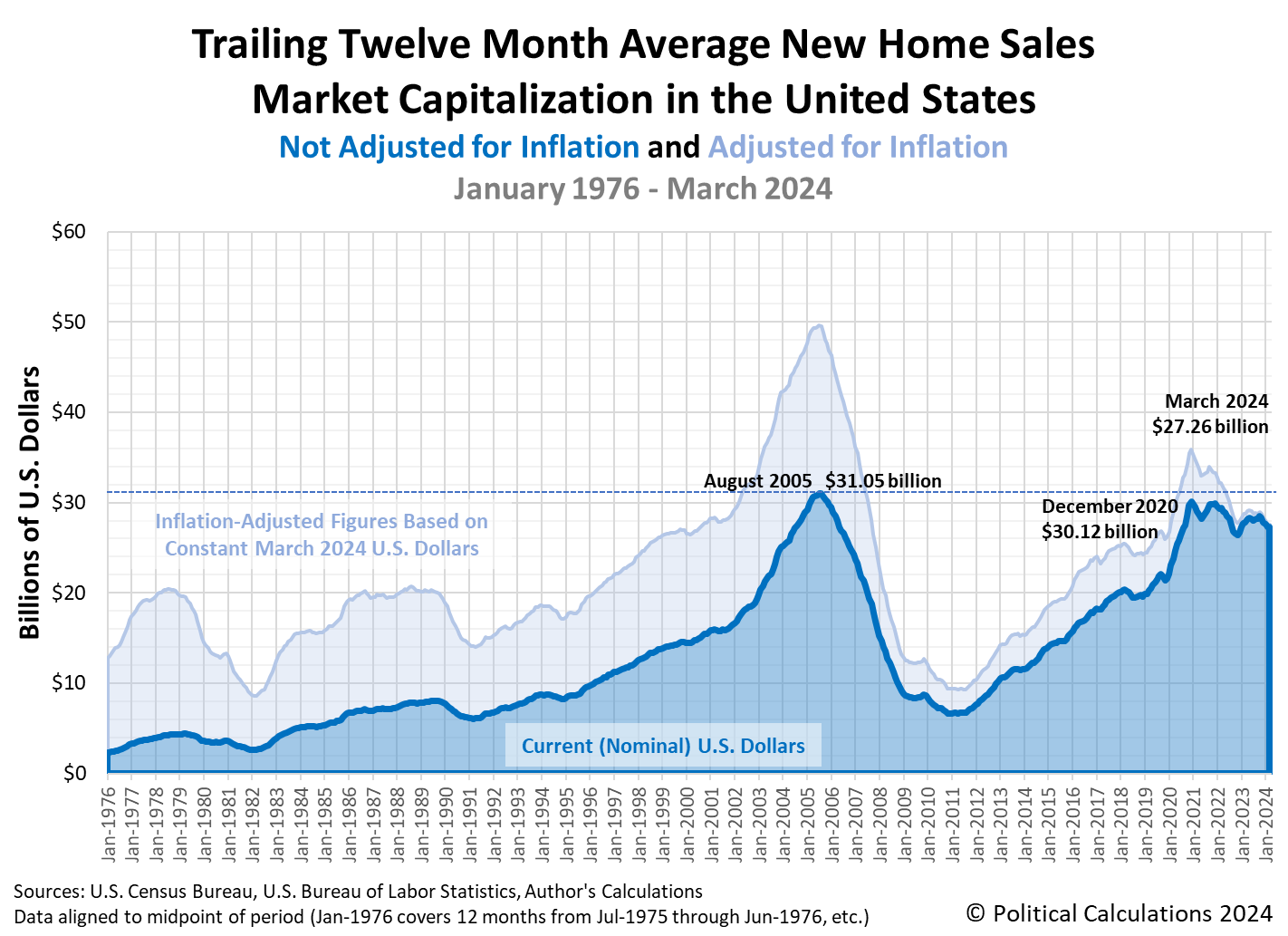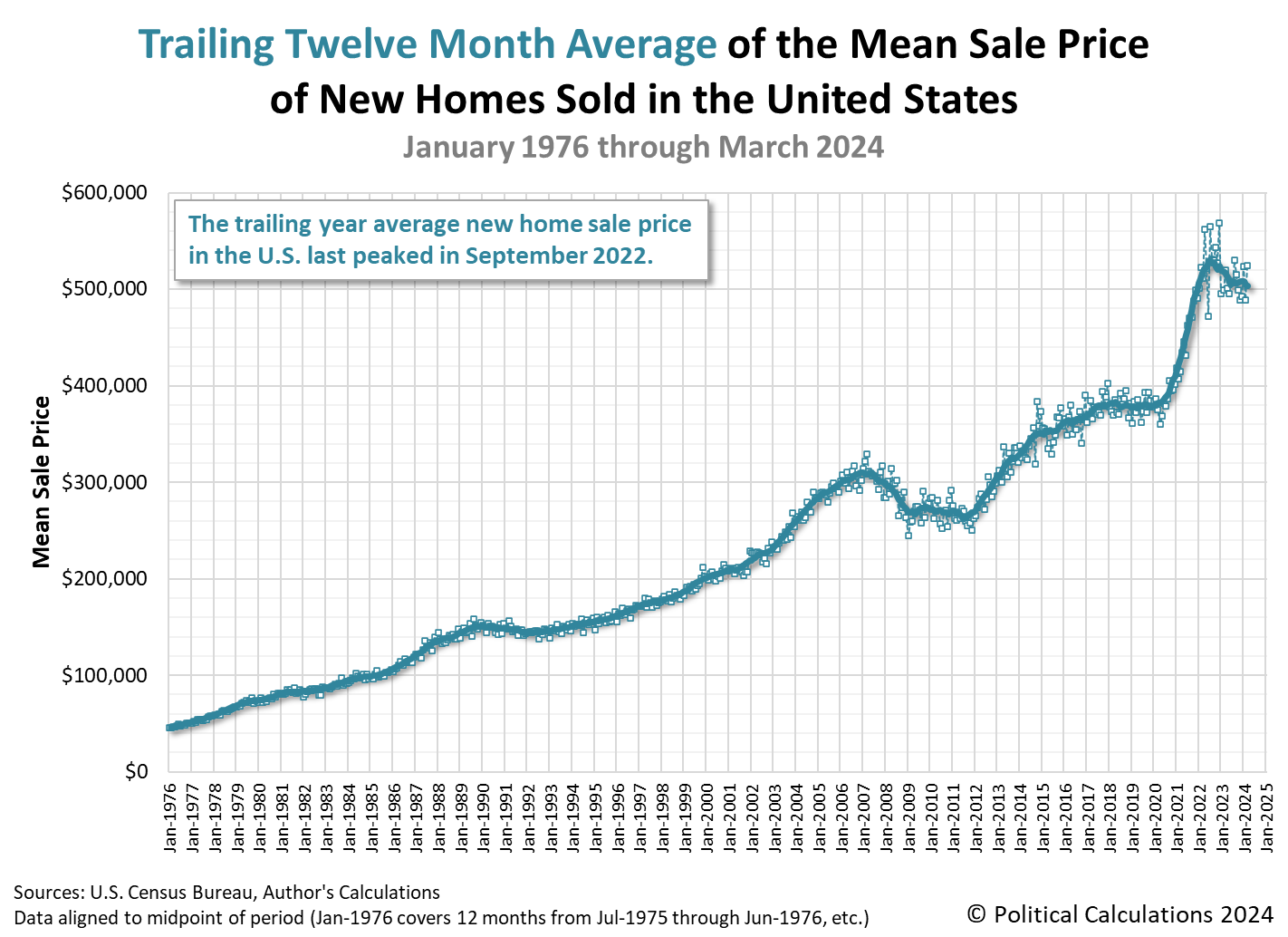March 2024 was a good month for new home builders in the U.S. The month saw a rebound in the number of new home sales and also a rebound in the average new home sale prices over February 2024's depressed levels.
But that wasn't quite enough to definitively break the now six-month long downtrend we've been tracking for the industry, as measured by its trailing twelve month market capitalization. The market cap trend for new homes has been fading after having most recently peaked at approximately $28.46 billion in October 2023.
Likewise, the downward trends for the new home market's underlying number of sales and average sale prices remain intact, though the positive data for March 2024 contributed to slowing their descent.
The following charts show the evolution of the U.S. new home market capitalization, the number of new home sales, and also new home sale prices as measured by their time-shifted, trailing twelve month averages from January 1976 through March 2024.
Ideally, we'd like to see the trend for falling new home sale prices continue and be coupled with a rising number of sales that more than offsets the decline in their average price to produce a rising trend in the new home market cap. That pattern would be positive for both new home buyers and new home builders. Unfortunately, there are forces at work in the U.S. economy that may make realizing that positive scenario difficult:
Sales of new U.S. single-family homes rebounded in March from February's downwardly revised level, drawing support from a persistent shortage of previously owned houses on the market, but momentum could be curbed by a resurgence in mortgage rates.
The report from the Commerce Department on Tuesday also showed the median house price jumped to a seven month-high from February, likely as fewer builders offered price cuts and sales shifted to higher priced homes. Rising prices and mortgage rates could make housing even more unaffordable, especially for first-time buyers.
We'll examine the relative affordability of new homes for the typical American household in the very near future.
References
U.S. Census Bureau. New Residential Sales Historical Data. Houses Sold. [Excel Spreadsheet]. Accessed 23 April 2024.
U.S. Census Bureau. New Residential Sales Historical Data. Median and Average Sale Price of Houses Sold. [Excel Spreadsheet]. Accessed 23 April 2024.
Image credit: New Home Construction by Paul Brennan on PublicDomainPictures.net. Creative Commons CC0 1.0 DEED CC0 1.0 Universal.
Labels: market cap, real estate
Welcome to the blogosphere's toolchest! Here, unlike other blogs dedicated to analyzing current events, we create easy-to-use, simple tools to do the math related to them so you can get in on the action too! If you would like to learn more about these tools, or if you would like to contribute ideas to develop for this blog, please e-mail us at:
ironman at politicalcalculations
Thanks in advance!
Closing values for previous trading day.
This site is primarily powered by:
CSS Validation
RSS Site Feed
JavaScript
The tools on this site are built using JavaScript. If you would like to learn more, one of the best free resources on the web is available at W3Schools.com.



